 A dozen years ago, Mo Hayder's first thriller, Birdman, was plucked from the slush pile and became a bestseller in the U.K. She opted to produce a book around the time many of the people she knew began having children. "I had a burning urge to write," said Hayder, who was then in her 30s. "My friends' biological clocks were ticking, and my writing clock was ticking away."
A dozen years ago, Mo Hayder's first thriller, Birdman, was plucked from the slush pile and became a bestseller in the U.K. She opted to produce a book around the time many of the people she knew began having children. "I had a burning urge to write," said Hayder, who was then in her 30s. "My friends' biological clocks were ticking, and my writing clock was ticking away."
Birdman introduced readers to police detective Jack Caffery, who tracked murderers in London before joining Bristol's Major Crime Investigation Unit in England's West Country. Hayder's fifth novel featuring Caffery, Gone, won this year's Edgar Award for Best Novel. In the suspenseful story from the "maestro of the sinister" (New York Daily News), a crime that at first appears to be a routine carjacking is actually the abduction of the 11-year-old girl who was sitting in the vehicle's backseat.
Garnering the Edgar "is a huge honor, it really is," said Hayder. The only downside was that it required the reluctant public speaker to get up on stage and address a roomful of people. "I blame Dickens for this and Byron to a degree," she said. "They set this trend that writers have to be larger than life and have to speak and perform."
Despite having a bone to pick with Dickens, Hayder was brought up in an academic family and taught to respect the classics. She was firmly steered away from reading material like crime fiction. "If you were reading a thriller, it was the sort of thing you would hide in a brown paper cover," she said. Knowing she wanted to write but undecided as to what kind of book, it came as somewhat of a shock to realize her preference was to craft the once-forbidden thrillers. "Pretty much everything I was drawn to had a dark trajectory to it," Hayder said.
Dubbed the U.K.'s Thomas Harris, Hayder has earned a reputation for gruesome violence in her gritty thrillers. The contrast between the dark subject matter and her angelic looks has often prompted people to ask why a nice girl like her is writing "such evil stuff." (She deliberately chose the androgynous "Mo" as a pseudonym.) Getting older has a distinct advantage for Hayder in that the question is becoming less frequent. "It doesn't seem like such a huge disparity for people anymore," she said. "I can actually see a bit of change in people's attitudes."
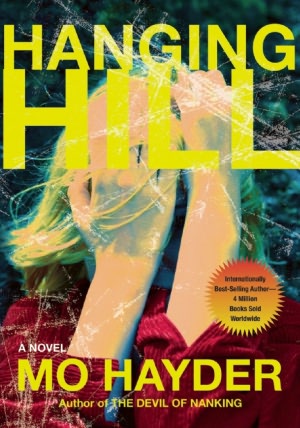 Although writing violence-filled novels doesn't scare Hayder, researching them does. "You're finding out about reality, you're finding out about things that are actually happening to people," she noted. "Curiously, I find that once I've written about it, the nightmares go away. After it's out on the page it almost loses that power over you."
Although writing violence-filled novels doesn't scare Hayder, researching them does. "You're finding out about reality, you're finding out about things that are actually happening to people," she noted. "Curiously, I find that once I've written about it, the nightmares go away. After it's out on the page it almost loses that power over you."
Before becoming a novelist, Hayder, who lives in the picturesque Cotswolds, worked as a barmaid, a security guard, a filmmaker, a hostess in a Tokyo club, an educational administrator and an English teacher in Asia. She has an M.A. in film from the American University in Washington, D.C., and an M.A. in creative writing from Bath Spa University in the U.K.
Along with the page-turners featuring Caffery, Hayder is the author of three stand-alone novels. The most recent, Hanging Hill, centers on a policewoman and her estranged sister as they're drawn into an underground world of sex and violence after the murder of a teenage girl. Writing stand-alone stories serves a special purpose for Hayder. Like the sorbet consumed between courses during a lavish meal, she said, "they refresh the palate."







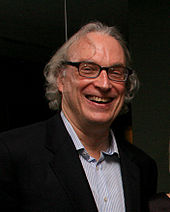 Although there are "significant changes looming on the horizon," business at
Although there are "significant changes looming on the horizon," business at 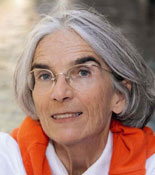 The Atlantic Crime line began when Entrekin, an "avid reader of crime fiction all my life," realized Grove/Atlantic couldn't expand more in its traditional areas of narrative journalism, literary fiction and biography "without bumping into ourselves." The line's first star was Donna Leon, the American writer who has long lived in Venice and sets her Commissario Guido Brunetti novels there.
The Atlantic Crime line began when Entrekin, an "avid reader of crime fiction all my life," realized Grove/Atlantic couldn't expand more in its traditional areas of narrative journalism, literary fiction and biography "without bumping into ourselves." The line's first star was Donna Leon, the American writer who has long lived in Venice and sets her Commissario Guido Brunetti novels there.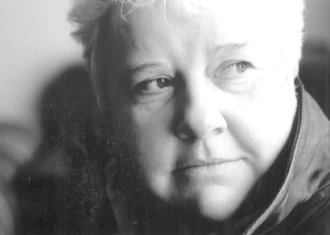 Another international author underpublished in the U.S. is Val McDermid, the Scottish crime writer who has sold millions of books worldwide and whose The Retribution was put out by Atlantic early this year. "We took her to the Winter Institute, to ALA, and on tour," Entrekin said. "We were trying to reinvigorate her profile and sales here." The efforts had a positive effect: "Sales were almost double that of her last book." In September, the company is publishing her next novel, The Vanishing Point.
Another international author underpublished in the U.S. is Val McDermid, the Scottish crime writer who has sold millions of books worldwide and whose The Retribution was put out by Atlantic early this year. "We took her to the Winter Institute, to ALA, and on tour," Entrekin said. "We were trying to reinvigorate her profile and sales here." The efforts had a positive effect: "Sales were almost double that of her last book." In September, the company is publishing her next novel, The Vanishing Point.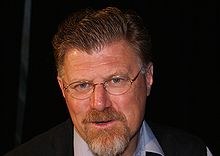 Little, Brown published several titles by South African writer Deon Meyer "diligently," but was unable to get "any traction," Entrekin said. Atlantic is publishing Seven Days in September and has reissued Meyer's backlist. Last fall Meyer won the Barry Award for best thriller at Boucheron for Thirteen Hours.
Little, Brown published several titles by South African writer Deon Meyer "diligently," but was unable to get "any traction," Entrekin said. Atlantic is publishing Seven Days in September and has reissued Meyer's backlist. Last fall Meyer won the Barry Award for best thriller at Boucheron for Thirteen Hours.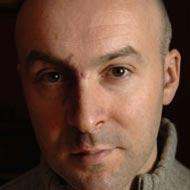 Scottish crime writer Christopher Brookmyre, author of Where the Bodies Are Buried (July), has an edge that Entrekin compared with Elmore Leonard and Carl Hiaasen. Grove/Atlantic is doing his backlist in e-book form and running promotions.
Scottish crime writer Christopher Brookmyre, author of Where the Bodies Are Buried (July), has an edge that Entrekin compared with Elmore Leonard and Carl Hiaasen. Grove/Atlantic is doing his backlist in e-book form and running promotions.
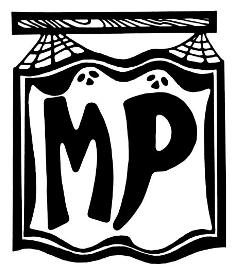 For mystery legend Otto Penzler, setting up shop for the Mysterious Press at Grove/Atlantic early last year was a return to a kind of publishing he cherishes. "This is real publishing," he said. "We don't have to have quarterly estimated earnings and sales targets." In a tone mixing appreciation and awe, he continued: "Morgan [Entrekin] loves books, and he still calls them books. He reads every book I've acquired and is innovative about marketing and promotions. He's fearless about publishing: he'll plunk down a lot of money. I love working with him."
For mystery legend Otto Penzler, setting up shop for the Mysterious Press at Grove/Atlantic early last year was a return to a kind of publishing he cherishes. "This is real publishing," he said. "We don't have to have quarterly estimated earnings and sales targets." In a tone mixing appreciation and awe, he continued: "Morgan [Entrekin] loves books, and he still calls them books. He reads every book I've acquired and is innovative about marketing and promotions. He's fearless about publishing: he'll plunk down a lot of money. I love working with him."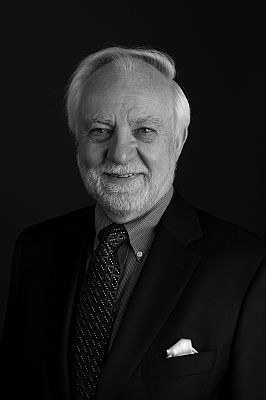 The revamped Mysterious Press started off with a bang. Last fall its first books consisted of a trifecta of titles by major authors: The Corn Maiden and Other Nightmares by Joyce Carol Oates, Headstone by Ken Bruen and Murder in Mount Holly by Paul Theroux. They were followed this winter by another "amazing" group, Penzler said, that included the "very successful" Harbor Nocturne by Joseph Wambaugh and Poison Flower, a Jane Whitefield novel by Thomas Perry.
The revamped Mysterious Press started off with a bang. Last fall its first books consisted of a trifecta of titles by major authors: The Corn Maiden and Other Nightmares by Joyce Carol Oates, Headstone by Ken Bruen and Murder in Mount Holly by Paul Theroux. They were followed this winter by another "amazing" group, Penzler said, that included the "very successful" Harbor Nocturne by Joseph Wambaugh and Poison Flower, a Jane Whitefield novel by Thomas Perry. A dozen years ago,
A dozen years ago,  Although writing violence-filled novels doesn't scare Hayder, researching them does. "You're finding out about reality, you're finding out about things that are actually happening to people," she noted. "Curiously, I find that once I've written about it, the nightmares go away. After it's out on the page it almost loses that power over you."
Although writing violence-filled novels doesn't scare Hayder, researching them does. "You're finding out about reality, you're finding out about things that are actually happening to people," she noted. "Curiously, I find that once I've written about it, the nightmares go away. After it's out on the page it almost loses that power over you."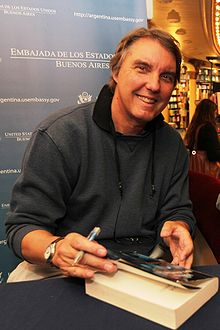 When
When 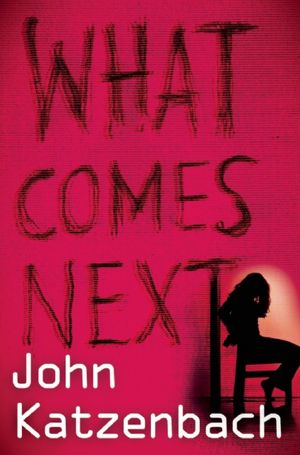 Only after he had several books under his belt did Katzenbach realize that he was writing thrillers. To have characters die in horrific ways during the course of a story didn't seem all that unusual when "every day in Florida you would pick up the paper and read that somebody had been stabbed or shot or eviscerated or guillotined or whatever," he said. "It was like being in the theater all the time and watching these dramas play out in front of you."
Only after he had several books under his belt did Katzenbach realize that he was writing thrillers. To have characters die in horrific ways during the course of a story didn't seem all that unusual when "every day in Florida you would pick up the paper and read that somebody had been stabbed or shot or eviscerated or guillotined or whatever," he said. "It was like being in the theater all the time and watching these dramas play out in front of you."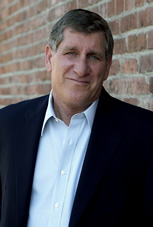 When nuclear engineer turned novelist
When nuclear engineer turned novelist 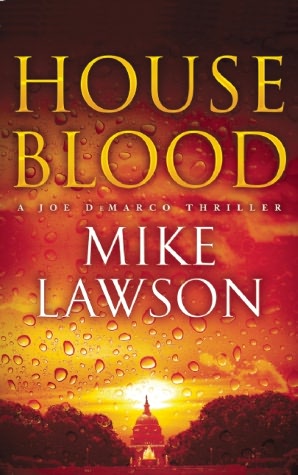 A lawyer on House Speaker John Mahoney's payroll, DeMarco's off-the-books role is to play troubleshooter for his powerful boss. In his most recent outing, he goes up against a ruthless pharmaceutical corporation that stands to make billions from a new discovery. The company's cold-blooded CEO targets a philanthropist to be the unsuspecting bearer of the drug to human test subjects, the victims of wars and natural disasters she's aiding in third-world countries.
A lawyer on House Speaker John Mahoney's payroll, DeMarco's off-the-books role is to play troubleshooter for his powerful boss. In his most recent outing, he goes up against a ruthless pharmaceutical corporation that stands to make billions from a new discovery. The company's cold-blooded CEO targets a philanthropist to be the unsuspecting bearer of the drug to human test subjects, the victims of wars and natural disasters she's aiding in third-world countries.